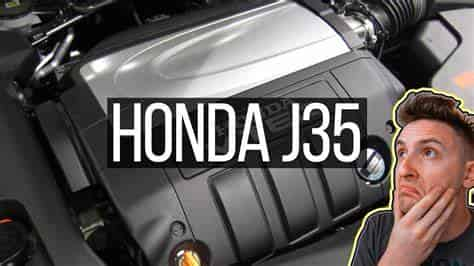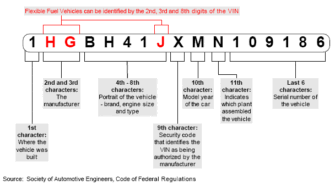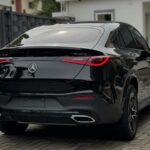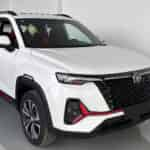

Unveiling the Powerhouse: Honda J35 V6 Engine Guide – Models, Performance, and Common Issues
When considering a vehicle driven by Honda’s renowned 3.5-liter V6 engine, the J35, it’s essential to unravel the complexities of this powerhouse. Over its 24-year legacy, this engine has become a cornerstone in various Honda models, yet, like any mechanical marvel, it harbors its peculiarities. In this extensive exploration, we’ll delve into the array of models housing the Honda J35 V6 Engine, dissect prevalent issues that have surfaced over the years, and tackle the critical question: Does investing in a Honda with this engine type truly pay off?
Evolution Unveiled: The J35 Engine’s Journey
The saga of the J35 engine commenced in 1998 with the introduction of the J35A in Honda Odyssey minivans. Since then, this engine has undergone several metamorphoses, giving rise to the J35S, J35Z, and the latest addition, the J35Y. Each variant brings a unique set of features and enhancements, demanding a discerning eye from potential buyers.
Embarking on a Model Expedition
The Honda 3.5-liter V6 engine has left an indelible mark on various models, showcasing its versatility and adaptability. Let’s closely examine the models associated with each engine family:
J35A Engine Family (Used in models from 1998–2010):
- Honda Odyssey (1998–2010)
- Acura MDX (2001–2006)
- Honda Pilot (2003–2008)
- Acura RL (2005–2008)
- Acura TL Type-S (2007–2008)
- Honda Ridgeline (2006–2008)
J35Z Engine Family (“Earth Dreams” Engine, used in models from 2006–2017):
- Pilot (2006–2008 front-wheel drive only and 2009–2015)
- Ridgeline (2009–2014)
- Honda Accord (2008–2012)
- Acura RDX (2013–2018)
- Acura TSX (2010–2014)
- TL (2009–2014)
- Odyssey (2011–2017)
J35Y Engine Family (Introduced in models from 2013 onwards):
- Accord (2013–2017)
- Acura RLX (2014–2020)
- Honda Legend (2014-2020)
- MDX (2014-2020)
- TLX (2015-2020)
- Pilot (since 2016)
- Ridgeline (since 2017)
- Odyssey (since 2018)
- Honda Passport (since 2019)
Cracking the Code: Performance Metrics
Understanding the power output of these engines is paramount for potential buyers. The J35A engines range from 210 hp for the Odyssey to an impressive 286 hp for the RL and TL. The J35Z engines, dubbed the “Earth Dreams” engine, offer a power range from 244 to 280 hp. The newest J35Y engines, introduced in 2013, boast direct fuel injection, enhancing fuel economy, performance, and emissions, with horsepower ranging from 278 to 310 hp.
Revealing the Roadblocks: Common Challenges Unveiled
No mechanical creation is flawless, and the Honda 3.5-liter V6 engine is no exception. Over the years, three primary issues have surfaced, demanding attention from both current owners and potential buyers.
VCM Woes:
The introduction of Variable Cylinder Management (VCM) technology in the J35Z engines aimed to enhance emissions and fuel economy but birthed a slew of problems. One prevalent issue is excessive oil consumption, notably in the 2008 Accord, recording a staggering 265 engine complaints. Despite a 2011 software update, ongoing class-action lawsuits suggest persistent concerns.
Beyond oil consumption, gasket problems have surfaced, leading to oil leaks. The critical concern here is the potential for oil to seep onto the alternator, impacting various engine components. Remedies include aftermarket products and, in some cases, disabling the VCM.
Timing Belt Wear:
While not as prevalent as VCM issues, wear on the timing belt becomes a concern after six to eight years or around 100,000 miles. The Honda 3.5-liter V6 operates as an interference engine, posing a risk of valve and piston collision if the timing belt fails. Symptoms include power loss, unusual engine noises, misfires, and the illumination of the check engine light.
In addressing timing belt issues, genuine parts are crucial. With counterfeit components flooding the market, particularly in regions like Nigeria, buyers must exercise caution to ensure reliable replacements.
Carbon Build-Up Challenge:
The advent of direct injection (DI) systems in newer Honda V6 engines has brought increased power and fuel efficiency but at the cost of potential carbon build-up. This issue typically surfaces between 80,000 to 120,000 miles, manifesting through symptoms such as power loss, engine misfiring, rough idling, stuttering, or hesitation.
Buyers should be aware of this challenge, and regular maintenance, including periodic cleaning or decarbonization, can mitigate the impact on engine performance.
Evaluating the Investment: Is it Worth It?
Considering the outlined challenges, the pivotal question emerges: Is it worth investing in a vehicle equipped with Honda’s 3.5-liter V6 engine? While identified problems could lead to catastrophic failures, it’s essential to acknowledge that, overall, these engines are reliable.
Maintenance Matters:
Proper maintenance is the key to ensuring the longevity and optimal performance of the J35 engines. High-quality oil, timely fluid changes, and prompt issue resolution can significantly mitigate identified problems. Staying vigilant with service appointments and adhering to recommended maintenance schedules are vital practices for any Honda owner.
Longevity and Reliability:
Despite the challenges, J35 engines have proven their resilience by often surpassing the 200,000-mile mark without significant troubles. This speaks to the inherent robustness of these engines when cared for diligently. The longevity of the J35 engines positions them as reliable options for those prioritizing consistent performance over an extended period.
Buyer Beware: Awareness is Key
For prospective buyers, being informed about potential challenges and understanding the specific model’s history becomes paramount. This knowledge empowers buyers to make educated decisions, whether negotiating prices, factoring in potential repair costs, or simply being prepared for preventive maintenance.
Conclusion
Honda’s 3.5-liter V6 engine has cemented itself as a workhorse, propelling a diverse range of vehicles over the years. While not immune to issues, the key lies in proactive maintenance and informed ownership. From VCM concerns to timing belt wear and carbon build-up, these challenges are navigable with proper care and attention.
Ultimately, the decision to invest in a vehicle with a Honda 3.5-liter V6 engine boils down to individual preferences, priorities, and a commitment to consistent maintenance practices. With the right approach, these engines can continue to deliver a powerful and reliable driving experience for years to come.
Categories
- Biography (4)
- Car Reviews (29)
- Car Tips (42)
- Classic Cars (45)
- Net Worth (12)
- Transportation (19)
Recent Posts
Related posts


How Roadside Potholes in Nigeria Are Damaging Your Car: Causes and Consequences

Toyota Camry 2.5-Litre Engine: Common Problems and What Nigerian Buyers Should Know








